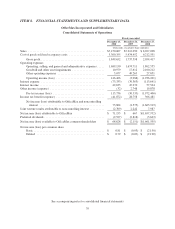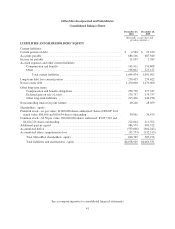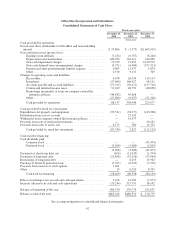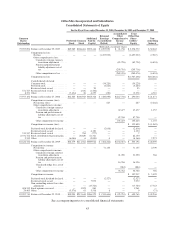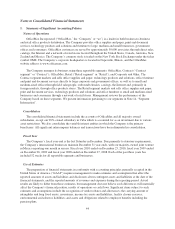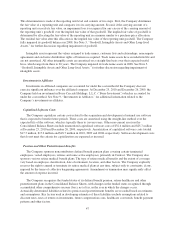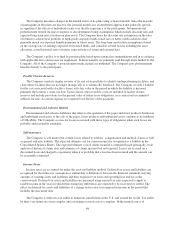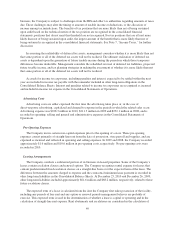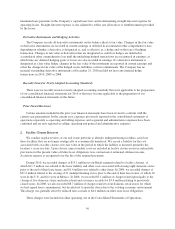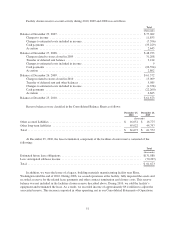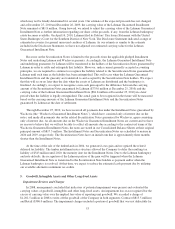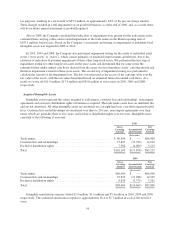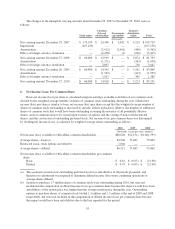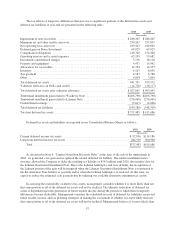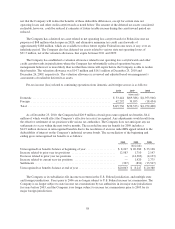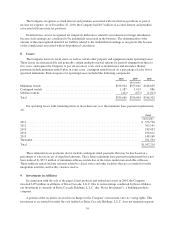OfficeMax 2010 Annual Report Download - page 69
Download and view the complete annual report
Please find page 69 of the 2010 OfficeMax annual report below. You can navigate through the pages in the report by either clicking on the pages listed below, or by using the keyword search tool below to find specific information within the annual report.business, the Company is subject to challenges from the IRS and other tax authorities regarding amounts of taxes
due. These challenges may alter the timing or amount of taxable income or deductions, or the allocation of
income among tax jurisdictions. The benefits of tax positions that are more likely than not of being sustained
upon audit based on the technical merits of the tax position are recognized in the consolidated financial
statements; positions that do not meet this threshold are not recognized. For tax positions that are at least more
likely than not of being sustained upon audit, the largest amount of the benefit that is more likely than not of
being sustained is recognized in the consolidated financial statements. See Note 7, “Income Taxes,” for further
discussion.
In assessing the realizability of deferred tax assets, management considers whether it is more likely than not
that some portion or all of the deferred tax assets will not be realized. The ultimate realization of deferred tax
assets is dependent upon the generation of future taxable income during the periods in which those temporary
differences become deductible. Management considers the scheduled reversal of deferred tax liabilities, projected
future taxable income, and tax planning strategies in making the assessment of whether it is more likely than not
that some portion or all of the deferred tax assets will not be realized.
Accruals for income tax exposures, including penalties and interest, expected to be settled within the next
year are included in income tax payable with the remainder included in other long-term obligations in the
Consolidated Balance Sheets. Interest and penalties related to income tax exposures are recognized as incurred
and included in income tax expense in the Consolidated Statements of Operations.
Advertising Costs
Advertising costs are either expensed the first time the advertising takes place or, in the case of
direct-response advertising, capitalized and charged to expense in the periods in which the related sales occur.
Advertising expense was $228.3 million in 2010, $211.3 million in 2009 and $232.1 million in 2008, and is
recorded in operating, selling and general and administrative expenses in the Consolidated Statements of
Operations.
Pre-Opening Expenses
The Company incurs certain non-capital expenses prior to the opening of a store. These pre-opening
expenses consist primarily of straight-line rent from the date of possession, store payroll and supplies, and are
expensed as incurred and reflected in operating and selling expenses. In 2009 and 2008, the Company recorded
approximately $1.6 million and $10.0 million in pre-opening costs, respectively. No pre-opening costs were
recorded in 2010.
Leasing Arrangements
The Company conducts a substantial portion of its business in leased properties. Some of the Company’s
leases contain escalation clauses and renewal options. The Company recognizes rental expense for leases that
contain predetermined fixed escalation clauses on a straight-line basis over the expected term of the lease. The
difference between the amounts charged to expense and the contractual minimum lease payment is recorded in
other long-term liabilities in the Consolidated Balance Sheets. At December 25, 2010 and December 26, 2009,
other long-term liabilities included approximately $61.6 million and $68.2 million, respectively, related to these
future escalation clauses.
The expected term of a lease is calculated from the date the Company first takes possession of the facility,
including any periods of free rent and any option or renewal periods management believes are probable of
exercise. This expected term is used in the determination of whether a lease is capital or operating and in the
calculation of straight-line rent expense. Rent abatements and escalations are considered in the calculation of
49


